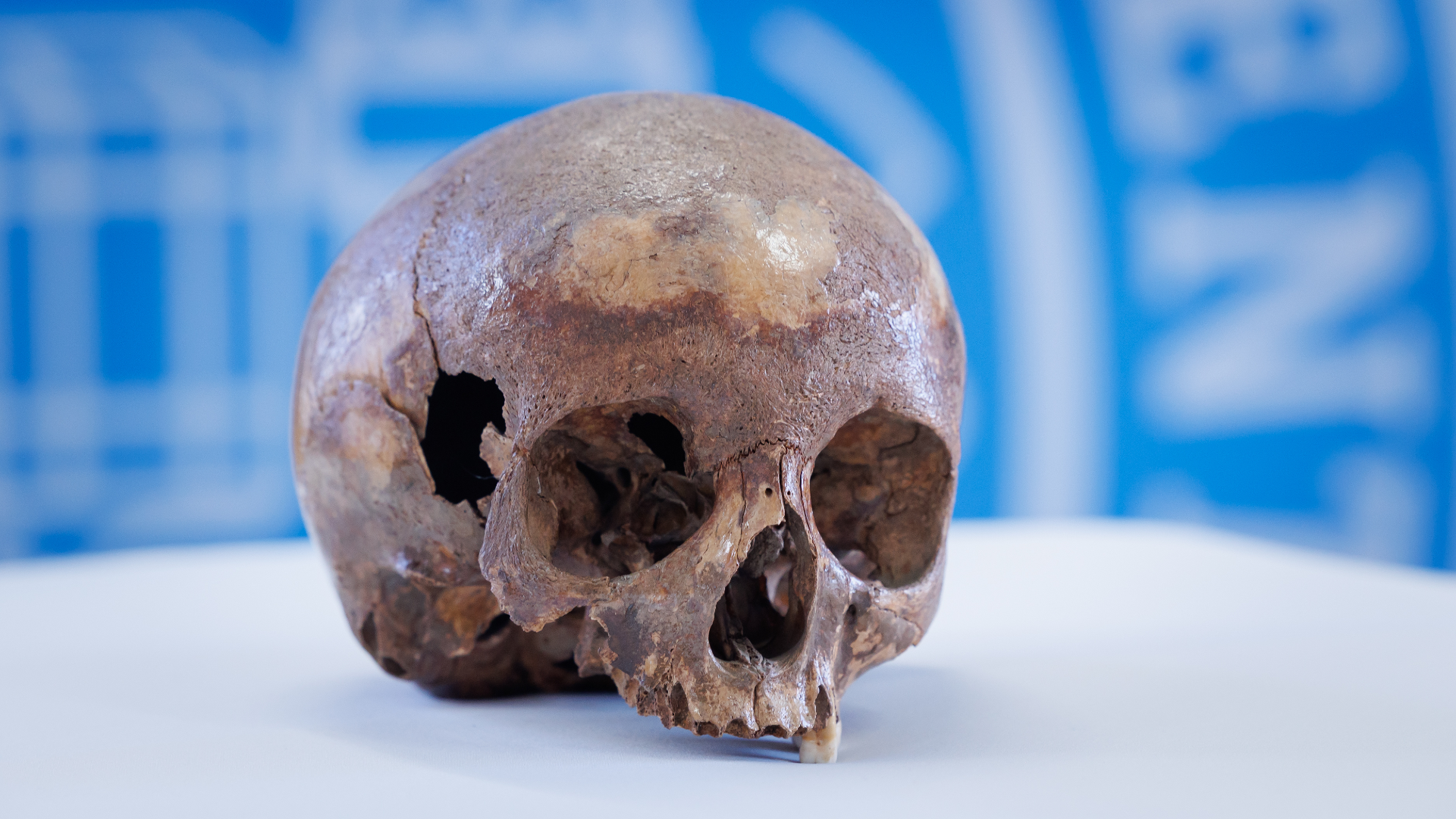0 Комментарии
0 Поделились
119 Просмотры

Каталог
Каталог
-
Войдите, чтобы отмечать, делиться и комментировать!
-
 WWW.ARCHDAILY.COMDezessete House / Studio Gontijo ArquiteturaDezessete House / Studio Gontijo ArquiteturaSave this picture! Edgard CesarHouses, RenovationBrasilia, BrazilArchitects: Studio Gontijo ArquiteturaAreaArea of this architecture projectArea:6200 ftYearCompletion year of this architecture project Year: 2018 PhotographsPhotographs:Edgard Cesar Lead Architects: Gabriela Gontijo e Mariana Hummel More SpecsLess SpecsSave this picture!Text description provided by the architects. The project of House Seventeen emerged from the proposal to renovate an existing building, with the main objective being to redistribute the spaces to meet the clients' program requirements while retaining the original structure. The proposed program distributes the rooms through an "L"-shaped floor plan, where the private area is concentrated on one side of the house and the social area is spread along the opposite side, extending along the length of the site. The service area is concentrated at the front of the house, shielded from external visibility by slatted panels of natural wood.Save this picture!Save this picture!The master suite opens directly onto the pool area, which is bordered by the open-plan gourmet space, seamlessly connected to the garden. Wood, the protagonist element of the house's architecture, envelops both the external walls, composing the main facade, and the ceiling of the outdoor common area, through spaced and repeated beams that bring rhythm to the block.Save this picture!The presence of greenery is also a focal point of the project, aiming to connect nature and architecture in all areas of the house. On the front facade, a sloping beam clad in corten steel delineates the upper part of the main volume. A setback in this block marks the social entrance, flanked by a garden featuring a tree that intersects the void left by the design of that beam.Save this picture!In response to the clients' demands, a new block was constructed at the back of the plot to accommodate the playroom, which houses a spacious area dedicated to the games and activities of the couple's three children. Here, the architectural language follows that of the main block, with external claddings in slatted wood panels and large translucent glass windows, directly connecting the interior space to the garden, allowing play to flow freely between both spaces.Save this picture!The final result of the architectural project is defined in a practical, functional, and timeless house, whose aesthetics harmonize with the modernist and clean lines language of the city in which it is located. Natural materials predominate in all spaces, ensuring that the rustic and the elegant are in constant harmony.Save this picture!Project gallerySee allShow lessAbout this officeMaterialWoodMaterials and TagsPublished on January 10, 2025Cite: "Dezessete House / Studio Gontijo Arquitetura" [Casa Dezessete / Studio Gontijo Arquitetura] 10 Jan 2025. ArchDaily. Accessed . <https://www.archdaily.com/1025500/dezessete-house-studio-gontijo-arquitetura&gt ISSN 0719-8884Save!ArchDaily?You've started following your first account!Did you know?You'll now receive updates based on what you follow! Personalize your stream and start following your favorite authors, offices and users.Go to my stream0 Комментарии 0 Поделились 109 Просмотры
WWW.ARCHDAILY.COMDezessete House / Studio Gontijo ArquiteturaDezessete House / Studio Gontijo ArquiteturaSave this picture! Edgard CesarHouses, RenovationBrasilia, BrazilArchitects: Studio Gontijo ArquiteturaAreaArea of this architecture projectArea:6200 ftYearCompletion year of this architecture project Year: 2018 PhotographsPhotographs:Edgard Cesar Lead Architects: Gabriela Gontijo e Mariana Hummel More SpecsLess SpecsSave this picture!Text description provided by the architects. The project of House Seventeen emerged from the proposal to renovate an existing building, with the main objective being to redistribute the spaces to meet the clients' program requirements while retaining the original structure. The proposed program distributes the rooms through an "L"-shaped floor plan, where the private area is concentrated on one side of the house and the social area is spread along the opposite side, extending along the length of the site. The service area is concentrated at the front of the house, shielded from external visibility by slatted panels of natural wood.Save this picture!Save this picture!The master suite opens directly onto the pool area, which is bordered by the open-plan gourmet space, seamlessly connected to the garden. Wood, the protagonist element of the house's architecture, envelops both the external walls, composing the main facade, and the ceiling of the outdoor common area, through spaced and repeated beams that bring rhythm to the block.Save this picture!The presence of greenery is also a focal point of the project, aiming to connect nature and architecture in all areas of the house. On the front facade, a sloping beam clad in corten steel delineates the upper part of the main volume. A setback in this block marks the social entrance, flanked by a garden featuring a tree that intersects the void left by the design of that beam.Save this picture!In response to the clients' demands, a new block was constructed at the back of the plot to accommodate the playroom, which houses a spacious area dedicated to the games and activities of the couple's three children. Here, the architectural language follows that of the main block, with external claddings in slatted wood panels and large translucent glass windows, directly connecting the interior space to the garden, allowing play to flow freely between both spaces.Save this picture!The final result of the architectural project is defined in a practical, functional, and timeless house, whose aesthetics harmonize with the modernist and clean lines language of the city in which it is located. Natural materials predominate in all spaces, ensuring that the rustic and the elegant are in constant harmony.Save this picture!Project gallerySee allShow lessAbout this officeMaterialWoodMaterials and TagsPublished on January 10, 2025Cite: "Dezessete House / Studio Gontijo Arquitetura" [Casa Dezessete / Studio Gontijo Arquitetura] 10 Jan 2025. ArchDaily. Accessed . <https://www.archdaily.com/1025500/dezessete-house-studio-gontijo-arquitetura&gt ISSN 0719-8884Save!ArchDaily?You've started following your first account!Did you know?You'll now receive updates based on what you follow! Personalize your stream and start following your favorite authors, offices and users.Go to my stream0 Комментарии 0 Поделились 109 Просмотры -
 WWW.POPSCI.COMPhysicists figure out the perfect Cacio e Pepe recipeCacio e pepe likely originated from Italian shepherds in the 18th or 19th century. Credit: Ekaterina Fedotova / 500px via Getty ImagesShareThe classic Italian dish known as cacio e pepe only requires three primary ingredients, but achieving its celebrated, creamy consistency is notoriously difficult. Researchers at Germanys Max Planck Institute for the Physics of Complex Systems even go so far as to describe the dish as possessing problematic aspects requiring extra care in their Soft Condensed Matter preprint study. But thanks to recent analysis using a physics concept called phase separation, the team believes they have achieved a scientifically optimized recipe for cacio e pepe. And its one anyone can use in their own kitchen.Cacio e pepe (cheese and pepper) originated in the Lazio region of central Italy during the 18th or 19th century. The meal likely came from shepherds living in the area, whose long distance travels required them to pack ingredients that were both shelf stable and calorically dense. Cacio e pepe in its most basic form needs just three componentspecorino cheese, black pepper, and spaghetti pastabut the complications arrive in its preparation. After boiling the pasta, a hungry cook must then mix just the right amount of grated pecorino into some of the leftover pasta water. The resultant cream sauce can then be poured over the noodles, garnished with the ground pepper, and enjoyed.[ Related: Scientists figured out the optimal cup of coffee. ]But theres a catch: if the water is too hot, or if the correct ratio of cheese-to-starch isnt achieved, then the cacio e pepe sauce turns into a thin liquid filled with congealed globs of curds. Physicists led by Italian-born Ivan Di Terlizzi designated this undesirable outcome the Mozzeralla Phase that results from extreme protein aggregation upon heating. Given how varied cheese-to-starch ratio can be, this means many-a-ruined cacio e pepe over the years have found their way into trashcans instead of onto plates.Di Terlizzi and his colleagues wanted to end this centuries-old culinary frustration. The team experimented with hundreds of recipe iterations using different amounts of ingredients. After blending varying proportions of cheese, starch, and water, they then heated each version in a pan using a warm water bath method known as a sous vide cooker. After each mixture reached a designated temperature between 122-203 degrees Fahrenheit, the researchers next photographed a sample placed on a Petri dish. They then arranged these pictures into whats known as a phase diagrama way to help chart a subjects potential states depending on changes in various conditions. In the case of cacio e pepe, these included factors such as temperature and starch level.[ Related: How to fix common cooking mistakes. ]Di Terlizzi identified a clear relation between the sauces protein level and its temperature when its overall starch level remained constantone that formed a U-shaped curve when graphed. Both extremely low and high levels of the pecorino-derived protein avoided the Mozzarella Phase at a higher minimum temperature. According to researchers, this means that cacio e pepes starch concentration is the key factor influencing sauce stability. More specifically, a creamy sauce requires a starch level of 2-3 percent.But, for practical purposes, there was a problemone that may help explain why making cacio e pepe can be so frustrating: pasta water usually only retains a starch level of about one percent after cooking. Luckily, the physicists found a simple solution. To remedy the issue researchers used a tried-and-true shortcut: cornstarch.And so, without further ado, here is the Di Terlizzi teams scientifically optimized recipe for a consistently flawless execution of cacio e pepe:For two servings:Pasta (240 g)Pecorino cheese (160 g)Cornstarch (4 g)Water (40 mL)Whole black peppercorns, to tasteToast peppercorns in a pan until fragrant, then grind them. Mix cornstarch into water while heating until it forms a gel. After the gel cools, combine with pecorino and desired amount of ground black pepper in a blender. Boil pasta, then reserve some of the starchy water before draining it. Mix pasta into the source, adding the pasta water as needed until desired consistency is reached.But nothing is ever perfect in the culinary world. Although confident of their scientifically optimized cacio e pepe, the physicists note in their study that future investigations could explore the relationship between starch and sauce viscosity, as well as the potential role of peppercorns as aggregation nuclei. Until then, buon appetito.0 Комментарии 0 Поделились 114 Просмотры
WWW.POPSCI.COMPhysicists figure out the perfect Cacio e Pepe recipeCacio e pepe likely originated from Italian shepherds in the 18th or 19th century. Credit: Ekaterina Fedotova / 500px via Getty ImagesShareThe classic Italian dish known as cacio e pepe only requires three primary ingredients, but achieving its celebrated, creamy consistency is notoriously difficult. Researchers at Germanys Max Planck Institute for the Physics of Complex Systems even go so far as to describe the dish as possessing problematic aspects requiring extra care in their Soft Condensed Matter preprint study. But thanks to recent analysis using a physics concept called phase separation, the team believes they have achieved a scientifically optimized recipe for cacio e pepe. And its one anyone can use in their own kitchen.Cacio e pepe (cheese and pepper) originated in the Lazio region of central Italy during the 18th or 19th century. The meal likely came from shepherds living in the area, whose long distance travels required them to pack ingredients that were both shelf stable and calorically dense. Cacio e pepe in its most basic form needs just three componentspecorino cheese, black pepper, and spaghetti pastabut the complications arrive in its preparation. After boiling the pasta, a hungry cook must then mix just the right amount of grated pecorino into some of the leftover pasta water. The resultant cream sauce can then be poured over the noodles, garnished with the ground pepper, and enjoyed.[ Related: Scientists figured out the optimal cup of coffee. ]But theres a catch: if the water is too hot, or if the correct ratio of cheese-to-starch isnt achieved, then the cacio e pepe sauce turns into a thin liquid filled with congealed globs of curds. Physicists led by Italian-born Ivan Di Terlizzi designated this undesirable outcome the Mozzeralla Phase that results from extreme protein aggregation upon heating. Given how varied cheese-to-starch ratio can be, this means many-a-ruined cacio e pepe over the years have found their way into trashcans instead of onto plates.Di Terlizzi and his colleagues wanted to end this centuries-old culinary frustration. The team experimented with hundreds of recipe iterations using different amounts of ingredients. After blending varying proportions of cheese, starch, and water, they then heated each version in a pan using a warm water bath method known as a sous vide cooker. After each mixture reached a designated temperature between 122-203 degrees Fahrenheit, the researchers next photographed a sample placed on a Petri dish. They then arranged these pictures into whats known as a phase diagrama way to help chart a subjects potential states depending on changes in various conditions. In the case of cacio e pepe, these included factors such as temperature and starch level.[ Related: How to fix common cooking mistakes. ]Di Terlizzi identified a clear relation between the sauces protein level and its temperature when its overall starch level remained constantone that formed a U-shaped curve when graphed. Both extremely low and high levels of the pecorino-derived protein avoided the Mozzarella Phase at a higher minimum temperature. According to researchers, this means that cacio e pepes starch concentration is the key factor influencing sauce stability. More specifically, a creamy sauce requires a starch level of 2-3 percent.But, for practical purposes, there was a problemone that may help explain why making cacio e pepe can be so frustrating: pasta water usually only retains a starch level of about one percent after cooking. Luckily, the physicists found a simple solution. To remedy the issue researchers used a tried-and-true shortcut: cornstarch.And so, without further ado, here is the Di Terlizzi teams scientifically optimized recipe for a consistently flawless execution of cacio e pepe:For two servings:Pasta (240 g)Pecorino cheese (160 g)Cornstarch (4 g)Water (40 mL)Whole black peppercorns, to tasteToast peppercorns in a pan until fragrant, then grind them. Mix cornstarch into water while heating until it forms a gel. After the gel cools, combine with pecorino and desired amount of ground black pepper in a blender. Boil pasta, then reserve some of the starchy water before draining it. Mix pasta into the source, adding the pasta water as needed until desired consistency is reached.But nothing is ever perfect in the culinary world. Although confident of their scientifically optimized cacio e pepe, the physicists note in their study that future investigations could explore the relationship between starch and sauce viscosity, as well as the potential role of peppercorns as aggregation nuclei. Until then, buon appetito.0 Комментарии 0 Поделились 114 Просмотры -
 WWW.POPSCI.COMWhy do birds make so many different sounds? 100,000 audio recordings offer clues.The planets birds make a lot of different sounds communicating a wide variety of messages. The petite Black-capped chickadee emits a high noise that tells predators to scram. Hungry Pileated Woodpecker chicks will often make a buzzy sound when they are waiting for food. Numerous different species use special songs to find mates and warblers are known to just sing for fun.While ornithologists, citizen scientists, and birders alike are familiar with this large repertoire, some of the environmental conditions that contribute to these sounds are less understood. To help, a team from the University of Wisconsin-Madison recently used over 100,000 audio recordings from around the world to study some of the factors that influence bird sounds. They found some patterns of how habitat, latitude, beak size, body size, and the landscapes can influence birds to create certain noises and at what frequencies. The findings are detailed in a study recently published in the journal Proceedings of the Royal Society B.Local to globalPreviously, hypotheses regarding the role that beak shape, geography, body size, relationships, and habitat play in bird sounds have been tested at smaller scales. In this new study, the team sought to test these hypotheses and see if they hold up at a global scale. The team analyzed audio recordings of bird sounds that were taken by participants around the world and submitted to an online nature sound repository called xeno-canto. The recordings represented about 77 percent of known bird species.Habitat and latitudeThe team found that habitat appears to influence the frequency of the sound the bird makes in some unexpected ways. In ecosystems where there is a lot of rushing water, there is a near constant level of white noise that occurs at a lower frequency. Here, the team found that birds tend to create sounds at a higher frequency so that the water does not drown out their sounds.Additionally, bird species that live at the same latitudes make similar sounds. According to the team, observing this pattern at a larger and global scale is a crucial piece of the puzzle of how bird sounds evolved.[ Related: Scientists simulate calls of future finches. ]Matters of sizeBoth beak shape and body mass are also important. In general, smaller birds generate higher frequency sounds, with larger birds creating lower frequency sounds. This new analysis proved that this hypothesis is correct, but it also added some additional data about the nature of the relationship between sound, beak shape, and body mass.Globally, smaller bird species tend to have a wider range of frequencies. They use these sounds as a protection mechanism and smaller and more vulnerable birds can benefit from having such a range of sounds. The higher frequencies can help them communicate with fellow birds of the same species. The lower frequencies can act like a bit of camouflage, potentially tricking predators into thinking that the birds are larger and more formidable than they actually are.Surrounded by noiseThe study also added to a better understanding of the planets soundscapes. These make up all of the sounds that can be heard in a particular area of land or sea. Soundscapes are often used in conservation studies, but we still dont know much about what environmental forces govern them.[ Related: Why are there so many birds? ]In the tropics and all over the world, larger birds tend to be hunted for meat, study co-author and UW-Madison doctoral student H.S. Sathya Chandra Sagar said in a statement. Larger birds [tend] to call at a low frequency, and if we dont find any sound in the lower frequency, we could [conclude] there may be more hunting in this landscape.Sagar hopes that this study can be used as a platform for future studies to monitor the health of an ecosystem through soundscapes. He plans to use 24-hour soundscape recordings to understand if some birds will modify both the timing and frequencies of their songs to communicate with their peers in a landscape crowded with noise.The post Why do birds make so many different sounds? 100,000 audio recordings offer clues. appeared first on Popular Science.0 Комментарии 0 Поделились 119 Просмотры
WWW.POPSCI.COMWhy do birds make so many different sounds? 100,000 audio recordings offer clues.The planets birds make a lot of different sounds communicating a wide variety of messages. The petite Black-capped chickadee emits a high noise that tells predators to scram. Hungry Pileated Woodpecker chicks will often make a buzzy sound when they are waiting for food. Numerous different species use special songs to find mates and warblers are known to just sing for fun.While ornithologists, citizen scientists, and birders alike are familiar with this large repertoire, some of the environmental conditions that contribute to these sounds are less understood. To help, a team from the University of Wisconsin-Madison recently used over 100,000 audio recordings from around the world to study some of the factors that influence bird sounds. They found some patterns of how habitat, latitude, beak size, body size, and the landscapes can influence birds to create certain noises and at what frequencies. The findings are detailed in a study recently published in the journal Proceedings of the Royal Society B.Local to globalPreviously, hypotheses regarding the role that beak shape, geography, body size, relationships, and habitat play in bird sounds have been tested at smaller scales. In this new study, the team sought to test these hypotheses and see if they hold up at a global scale. The team analyzed audio recordings of bird sounds that were taken by participants around the world and submitted to an online nature sound repository called xeno-canto. The recordings represented about 77 percent of known bird species.Habitat and latitudeThe team found that habitat appears to influence the frequency of the sound the bird makes in some unexpected ways. In ecosystems where there is a lot of rushing water, there is a near constant level of white noise that occurs at a lower frequency. Here, the team found that birds tend to create sounds at a higher frequency so that the water does not drown out their sounds.Additionally, bird species that live at the same latitudes make similar sounds. According to the team, observing this pattern at a larger and global scale is a crucial piece of the puzzle of how bird sounds evolved.[ Related: Scientists simulate calls of future finches. ]Matters of sizeBoth beak shape and body mass are also important. In general, smaller birds generate higher frequency sounds, with larger birds creating lower frequency sounds. This new analysis proved that this hypothesis is correct, but it also added some additional data about the nature of the relationship between sound, beak shape, and body mass.Globally, smaller bird species tend to have a wider range of frequencies. They use these sounds as a protection mechanism and smaller and more vulnerable birds can benefit from having such a range of sounds. The higher frequencies can help them communicate with fellow birds of the same species. The lower frequencies can act like a bit of camouflage, potentially tricking predators into thinking that the birds are larger and more formidable than they actually are.Surrounded by noiseThe study also added to a better understanding of the planets soundscapes. These make up all of the sounds that can be heard in a particular area of land or sea. Soundscapes are often used in conservation studies, but we still dont know much about what environmental forces govern them.[ Related: Why are there so many birds? ]In the tropics and all over the world, larger birds tend to be hunted for meat, study co-author and UW-Madison doctoral student H.S. Sathya Chandra Sagar said in a statement. Larger birds [tend] to call at a low frequency, and if we dont find any sound in the lower frequency, we could [conclude] there may be more hunting in this landscape.Sagar hopes that this study can be used as a platform for future studies to monitor the health of an ecosystem through soundscapes. He plans to use 24-hour soundscape recordings to understand if some birds will modify both the timing and frequencies of their songs to communicate with their peers in a landscape crowded with noise.The post Why do birds make so many different sounds? 100,000 audio recordings offer clues. appeared first on Popular Science.0 Комментарии 0 Поделились 119 Просмотры -
 WWW.NATURE.COMFacebook to ditch fact-checking: what do researchers think?Nature, Published online: 10 January 2025; doi:10.1038/d41586-025-00027-0Metas planned shift away from third party fact-checking in favour of a crowdsourced approach has perplexed those who study the spread of misinformation.0 Комментарии 0 Поделились 132 Просмотры
WWW.NATURE.COMFacebook to ditch fact-checking: what do researchers think?Nature, Published online: 10 January 2025; doi:10.1038/d41586-025-00027-0Metas planned shift away from third party fact-checking in favour of a crowdsourced approach has perplexed those who study the spread of misinformation.0 Комментарии 0 Поделились 132 Просмотры -
 WWW.NATURE.COMHow the brain cleans itself during deep sleepNature, Published online: 10 January 2025; doi:10.1038/d41586-025-00007-4Blood vessels in the brain rhythmically constrict and dilate to drive waves of cleansing fluid through the organ.0 Комментарии 0 Поделились 125 Просмотры
WWW.NATURE.COMHow the brain cleans itself during deep sleepNature, Published online: 10 January 2025; doi:10.1038/d41586-025-00007-4Blood vessels in the brain rhythmically constrict and dilate to drive waves of cleansing fluid through the organ.0 Комментарии 0 Поделились 125 Просмотры -
 WWW.NATURE.COMVoter turnout drives margins of victory if elections are fairNature, Published online: 10 January 2025; doi:10.1038/d41586-025-00023-4Model that predicts the spread of winning margins could be used to detect electoral interference.0 Комментарии 0 Поделились 126 Просмотры
WWW.NATURE.COMVoter turnout drives margins of victory if elections are fairNature, Published online: 10 January 2025; doi:10.1038/d41586-025-00023-4Model that predicts the spread of winning margins could be used to detect electoral interference.0 Комментарии 0 Поделились 126 Просмотры -
 WWW.LIVESCIENCE.COM'Big surprise' reveals supposed skull of 'Cleopatra's sister' actually belongs to an 11-year-old boyA cutting-edge analysis of a skull found in Turkey in 1929 proves once and for all that it is not Arsino IV, Cleopatra's half sister.0 Комментарии 0 Поделились 130 Просмотры
WWW.LIVESCIENCE.COM'Big surprise' reveals supposed skull of 'Cleopatra's sister' actually belongs to an 11-year-old boyA cutting-edge analysis of a skull found in Turkey in 1929 proves once and for all that it is not Arsino IV, Cleopatra's half sister.0 Комментарии 0 Поделились 130 Просмотры -
 WWW.LIVESCIENCE.COMStark 'drought' maps reveal just why wildfires have blazed through Los AngelesThe state is seeing a sharp water divide this year, with lots of rain in the north while the south has stayed dry. A hydrologist explains whats happening.0 Комментарии 0 Поделились 117 Просмотры
WWW.LIVESCIENCE.COMStark 'drought' maps reveal just why wildfires have blazed through Los AngelesThe state is seeing a sharp water divide this year, with lots of rain in the north while the south has stayed dry. A hydrologist explains whats happening.0 Комментарии 0 Поделились 117 Просмотры -
 WWW.LIVESCIENCE.COM2024 was the hottest year on record, and the 1st to breach the 1.5 C global warming limit, data revealsScientists have warned that the Paris Agreement to limit global warming will likely be breached as data reveals 2024 was the hottest year in human history.0 Комментарии 0 Поделились 112 Просмотры
WWW.LIVESCIENCE.COM2024 was the hottest year on record, and the 1st to breach the 1.5 C global warming limit, data revealsScientists have warned that the Paris Agreement to limit global warming will likely be breached as data reveals 2024 was the hottest year in human history.0 Комментарии 0 Поделились 112 Просмотры



